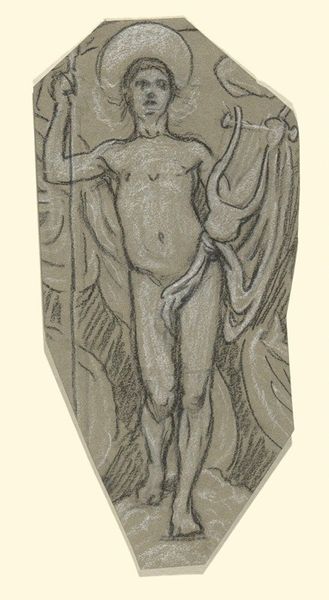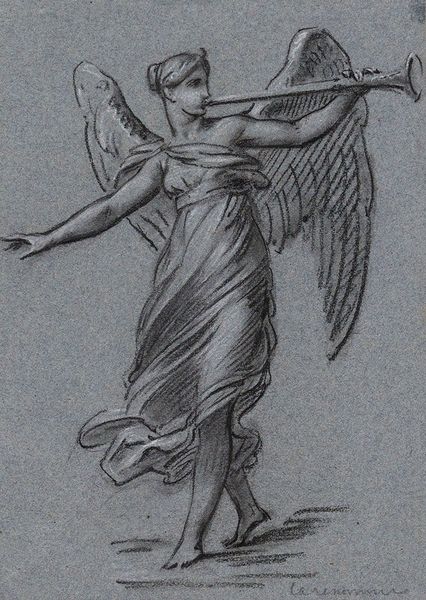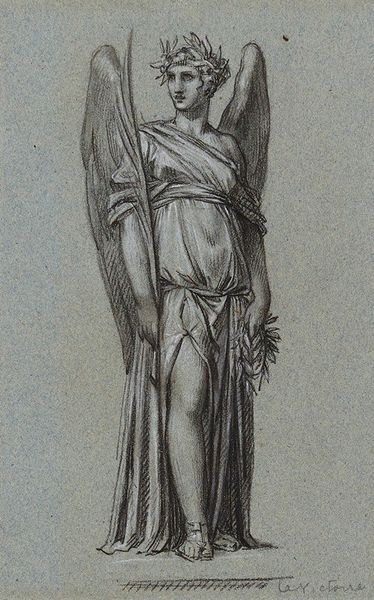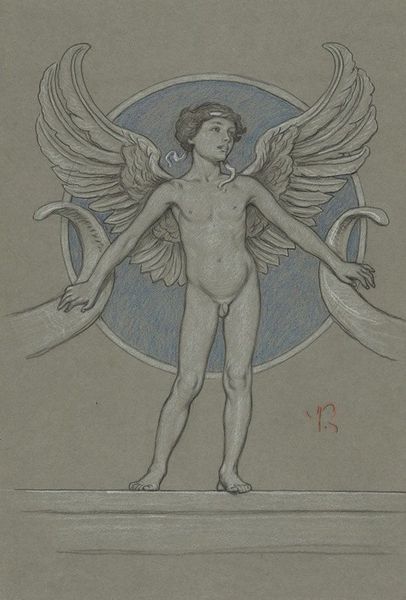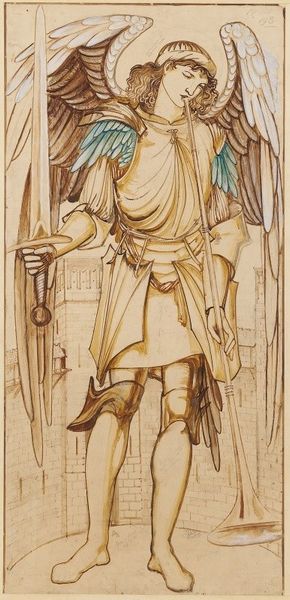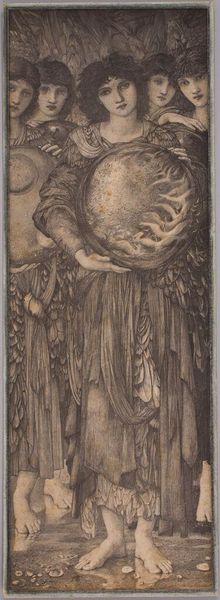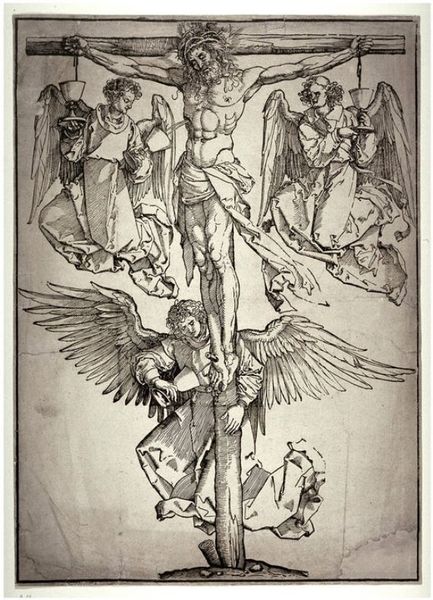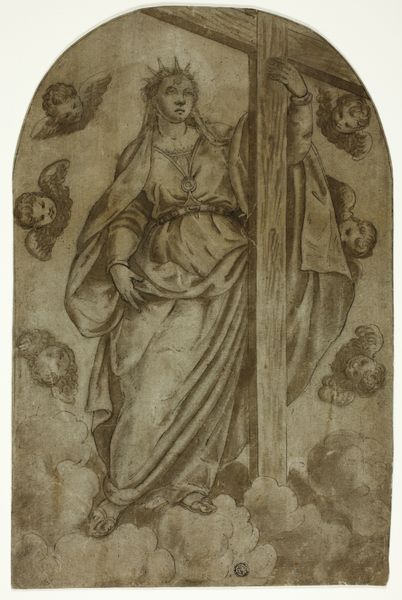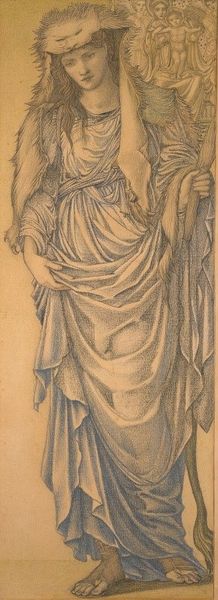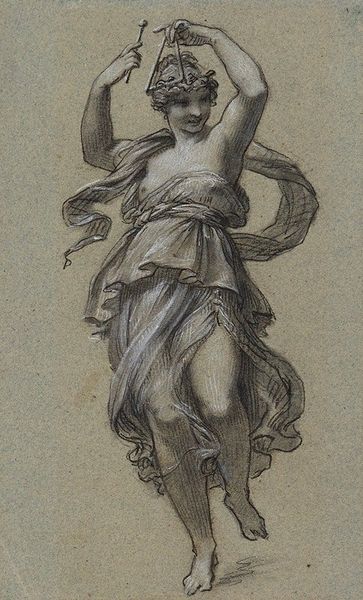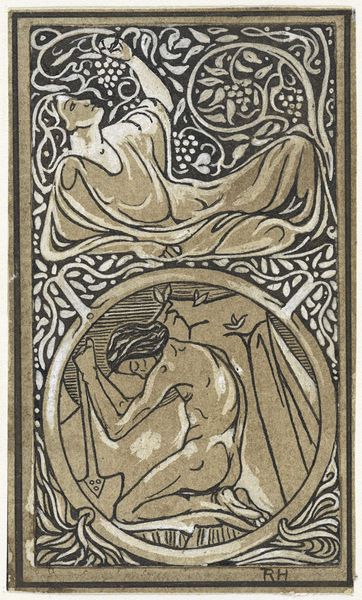
drawing, charcoal
#
portrait
#
drawing
#
allegory
#
charcoal drawing
#
mannerism
#
figuration
#
11_renaissance
#
charcoal art
#
mythology
#
charcoal
#
history-painting
#
charcoal
Copyright: Public domain
Curator: Wow, talk about drama! It feels… secretive, like glimpsing something powerful that’s not quite meant for me. Is this a summoning ritual? Editor: This is "Phanes," a charcoal drawing by Francesco Salviati. While undated, we place its creation firmly within the artistic ferment of the Renaissance. Phanes, as in, the mystical primordial deity, is depicted here in all his… glory. Curator: Yes, well, I certainly *see* that. All this rendering in charcoal...I keep thinking I’m staring into a memory, all those muted sepia tones lending a dreamlike aura. Almost photographic in its stark contrast of light and shadow, it's haunting. I am guessing that is quite deliberate to enhance his allegorical quality. Editor: Indeed. Salviati's mastery of chiaroscuro underscores the figure's complex symbolism. Observe how the snaking coils bind the androgynous Phanes; light glances off the scales suggesting perpetual cycles of creation and destruction. A snake eating its own tail represents exactly that! Curator: Mmm, now that you mention it, the more I stare at those serpentine forms coiling about him, the more I feel almost… trapped? There’s a tension between that almost impossibly luminous skin, rendered with such incredible finesse, and this palpable sense of constriction. Did Salviati do anything else with charcoal, like maybe landscape art, that captured your eye the same way this artwork captures my eye? Editor: Salviati was exceptionally skilled with drawing; "Phanes," as an autonomous piece, really pushes at our notions about Renaissance artistry. Its somber tone and intricate details stand out against the often flamboyant and decorative style. Consider the border with these micro figures placed into the oval frame… Curator: These miniscule characters placed into the oval frame really do give off a medieval sensibility, like gargoyles warding off evil spirits. I suppose they do serve the function of embellishing, framing, and reinforcing the symbolic content, a story within a story as such. Well, after having looked deeply into it now, "Phanes" remains… captivating. Its starkness is what brings me in; then its quietness lets me reflect deeply about how creation, divinity, destruction and rebirth coexist together. Editor: Absolutely, a potent drawing that reveals the Mannerist interest in emotional expression and complex narrative construction; Salviati truly left us with much to ponder.
Comments
No comments
Be the first to comment and join the conversation on the ultimate creative platform.
